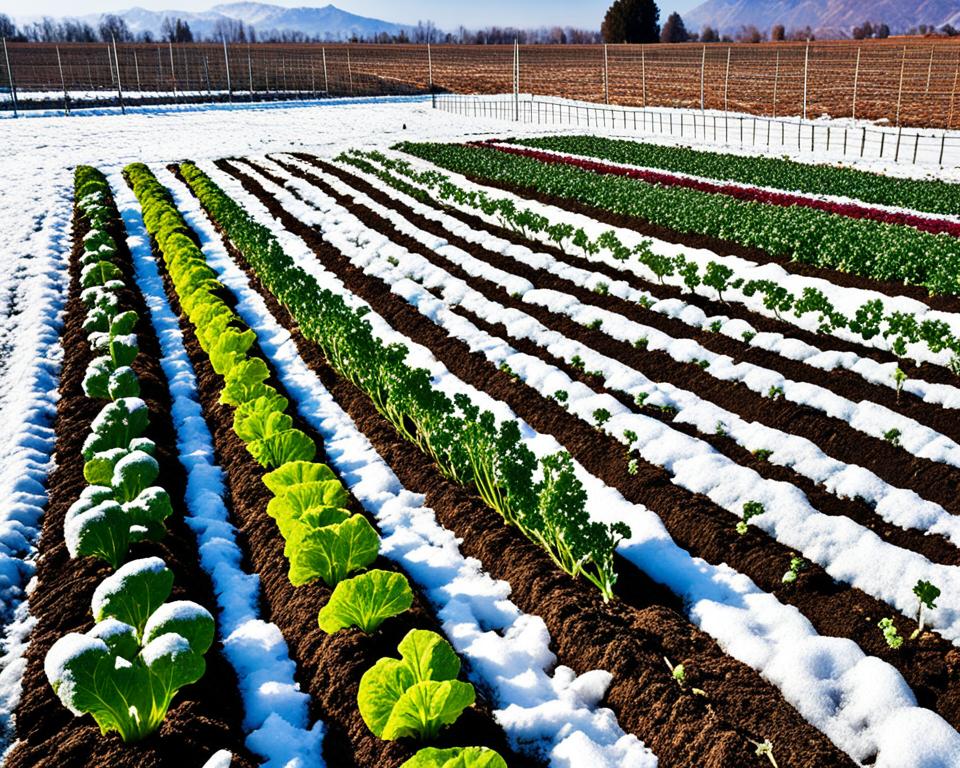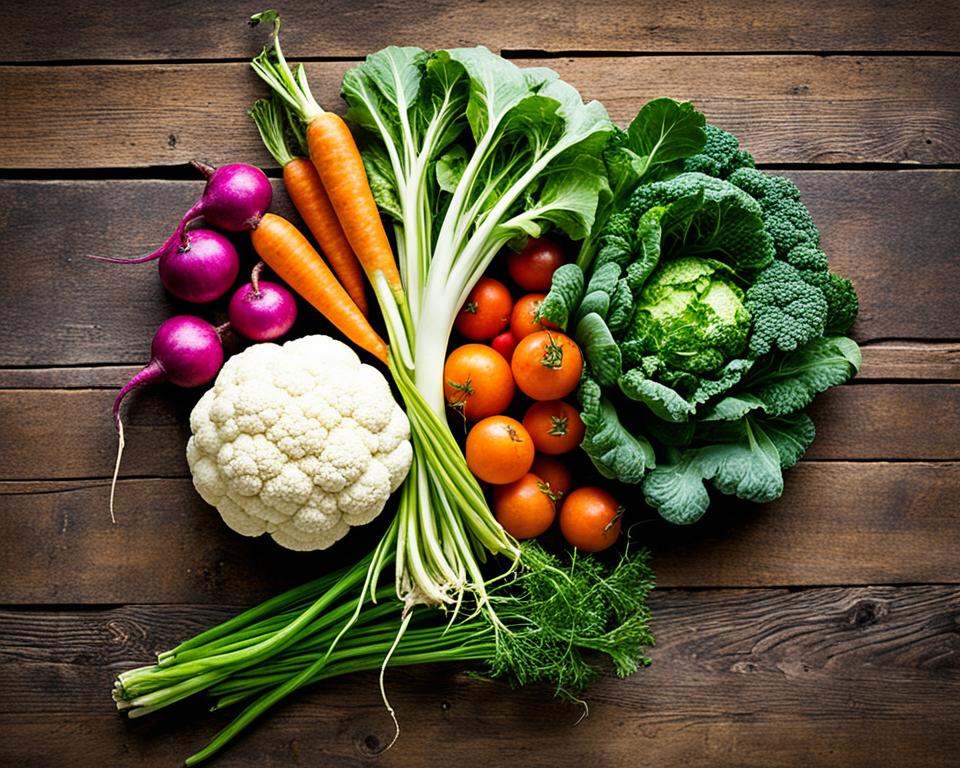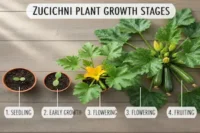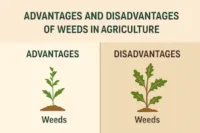Winter Vegetables in Pakistan: A Seasonal Guide
Published: 25 Aug 2024
Pakistan’s winter season is full of over 15 types of vegetables. Each one has its own special taste and health benefits. You can find everything from crisp carrots to earthy spinach. This guide will show you the variety of winter vegetables in Pakistan. We’ll discuss their health benefits and how to use them in your meals.
If you love cooking or want to try new recipes, this guide is for you. It will teach you how to enjoy the fresh winter produce in Pakistan. Get ready for a tasty journey through the winter vegetables of this South Asian country.
Key Takeaways
- Pakistan is home to a diverse range of over 15 different winter vegetables, each with its own unique flavor and nutritional profile.
- The best sowing time for winter vegetables in Pakistan is September and October.
- Winter vegetables are rich in antioxidants, vitamins, and fiber, providing numerous health benefits.
- Opting for locally sourced winter vegetables supports sustainable farming practices and the local economy in Pakistan.
- Proper fertilization and watering schedules are crucial for the successful cultivation of winter vegetables in Pakistan.
Introduction to Winter Vegetables in Pakistan
Pakistan’s markets shine with winter vegetables when it gets colder and days are shorter. These veggies add flavor and nutrition to meals. They also help the local farmers and support sustainable farming.
Nutritional Benefits of Winter Vegetables
Winter veggies in Pakistan are full of vitamins, minerals, and antioxidants. They are high in fiber, which boosts your immune system and keeps you going in the cold. From radish to cauliflower, each one has its own health perks.
Importance of Winter Season in Pakistan
The winter season in Pakistan brings a variety of fresh and nutritious vegetables that bloom in the cool climate. Some of the most popular winter vegetables are cauliflower, cabbage, carrots, spinach, radish, turnip, and peas. These vegetables grow well in the mild winter temperatures in Punjab, Sindh, and Khyber Pakhtunkhwa. The sowing process starts in late summer or early autumn. Spinach and mustard greens (sarson ka saag) are widely consumed, especially in traditional dishes. Radish and turnip are used in salads and cooked meals, while peas and carrots are essential for soups and mixed vegetable dishes. These winter vegetables add variety to meals and provide essential vitamins and minerals, helping people stay healthy during the cold season.
Choosing winter veggies means you get the best taste and freshness. It also helps local farmers and the planet. By picking local produce, you reduce carbon emissions, support green farming, and enjoy nature’s best.
| Vegetable | Sowing Time | Harvest Time |
|---|---|---|
| Spinach (Palak) | Late September to November | 4-5 weeks after sowing |
| Lettuce | – | Start harvesting outer leaves after 4-5 weeks |
| Radish (Mooli) | – | 3-4 weeks after sowing |
| Carrots | – | 2-3 months after sowing |
| Cauliflower | – | 2-3 months after transplanting |
“Eating seasonally and locally is not only better for your health, but it also supports the local farming community and helps promote sustainable agriculture.”
Popular Winter Vegetables in Pakistan

Pakistan has many winter vegetables that taste great and are good for you. You’ll find broccoli, potatoes, onions, lettuce, cauliflower, turnips, peas, spinach, carrots, beets, mustard, coriander, radishes, and mint. These vegetables grow best in the cool weather between 34°F and 75°F.
Carrots are a favorite in Pakistan, especially the T-29 type from 2006. It can produce up to 68,000 kg per hectare. Spinach lovers will enjoy Desi-Palak, released in 1992, which can yield 35,000 kg per hectare in Punjab’s irrigated areas.
Cauliflower is tasty and healthy, often sold on streets in Pakistan. Winter dishes with cauliflower are balanced, offering 370 calories, 10g carbs, 16g protein, and 30g fat per serving.
There are also lesser-known winter vegetables in Pakistan that are just as interesting. Chilies like Gola Pashori and Tatapuri were released in 1969 and can yield 4,000 kg/ha and 5,000 kg/ha, respectively. The pea variety Climax Improved, from 1990, can produce 10,000 kg/ha and is great for disease resistance and terracing.
Pakistan’s winter vegetables are a treasure if you love cooking or just enjoy trying new foods. They offer new tastes, textures, and nutrients. From well-known to hidden gems, these vegetables will make your winter meals exciting and healthy.
“The diversity of winter vegetables in Pakistan is a true testament to the country’s rich agricultural heritage and the ingenuity of its farmers.”
winter vegetables in Pakistan

When it comes to enjoying winter vegetables in Pakistan, picking and storing them right is key. Look for vegetables that are firm and have no blemishes. Karachi’s average sowing time for winter vegetables is late October to early November, so plan your purchases well to get the freshest produce.
Keep your winter veggies fresh by storing them in a cool, dry place like the fridge. Up to 80% of winter vegetables in Karachi are directly sown in well-drained soil or containers, so try to store them in similar conditions. Try to use your winter produce within a week for the best taste and nutrition.
Pest and Disease Management
Common pests affecting winter vegetables in Karachi include aphids, leaf miners, caterpillars, and flea beetles. Use neem oil to fight these pests. It’s a natural and effective way. Approximately 20% of winter vegetable crops in Karachi are susceptible to soil-borne diseases, with powdery mildew being the primary concern. Rotating your crops can help prevent diseases.
Adequate spacing is key for winter vegetables in Karachi to avoid overcrowding, which can lead to more pests and diseases. Following these tips, you can keep your winter produce fresh, tasty, and healthy all season.
“The sowing time for winter vegetables in Pakistan is typically September and October, with production extending till February or March.”
| Vegetable | Yield per Plant |
|---|---|
| Bitter Gourd | 3 kg |
| Bottle Gourd | 4 kg |
| Brinjal | 2 kg |
| Broccoli | 0.75 kg |
| Cabbage | 0.75 kg |
| Carrot | 130 gm |
| Cauliflower | 850 gm |
| Celery | 100 gm |
| Garlic | 50 gm |
The first harvest timing for winter vegetables in Pakistan ranges from 50 to 180 days, depending on the crop, with varying rows and plant spacings.
Cooking and Recipe Ideas
Winter in Pakistan brings lots of veggies to cook with. Try roasting them to make them sweet. Or make warm soups that fill your heart. Use different spices and cooking ways to make your own Pakistani dishes.
Check out over 25 Pakistani vegetarian recipes. You’ll find quick meals and big dishes for parties. There are vegan options, too. Enjoy dishes like Lobia ka Salan and Aloo Matar ki Sabzi.
Try Zeera Aloo Sabzi or Bhindi ki Sabzi for something new. Or go for Bhae ki Sabzi from Sindh. Serve with Pakistani breads and chutneys for a full meal.
Make winter vegetable curries or soups for a cozy meal. Use sautéing, braising, or roasting to highlight the veggies. Add your twist to Pakistani recipes to make them your own.
Looking for a quick meal or something special? Winter veggies in Pakistan have lots to offer. Enjoy their flavors and textures this season.
| Dish | Calories (per serving) | Macronutrients (per serving) | Other Nutrients (per serving) |
|---|---|---|---|
| Roasted Winter Vegetable Medley | 370kcal | Carbs: 10g, Protein: 16g, Fat: 30g | Saturated Fat: 8g, Cholesterol: 70mg, Sodium: 941mg, Potassium: 378mg, Fiber: 2g, Sugar: 4g |
| Vitamin A: 558IU, Vitamin C: 11mg, Calcium: 71mg, Iron: 2mg | |||
Winter vegetable dishes can be nutritious, depending on what you use and how you cook it. This roasted medley is full of good stuff like fiber and vitamins. Adding different veggies to your meals is great for your health.
“Embrace the flavors of the season and let your creativity shine in the kitchen with winter vegetables.”
Health Benefits of Winter Vegetables
When it gets colder and days are shorter, Pakistan’s winter brings many healthy vegetables. These veggies are full of vitamins, minerals, and antioxidants. They help boost your immune system and help with weight control.
Supporting Local Farmers and Sustainability
Buying winter veggies from local farmers helps you get fresh, tasty produce. It also helps the local food system. Pakistan’s climate is great for growing many winter veggies. This means you can get fresh, healthy food all winter.
These veggies, like cauliflower, carrots, and spinach, are good for your health. They also help farmers in Pakistan make a living.
Eating seasonal, local veggies is better for the planet than eating out-of-season or imported ones. Adding winter veggies to your meals can lower your carbon footprint. It helps make the food system more sustainable.
| Winter Vegetable | Nutritional Benefits | Primary Growing Regions in Pakistan |
|---|---|---|
| Cauliflower | Rich in fiber, vitamins C and K, and antioxidants | Punjab |
| Carrots | High in beta-carotene | Punjab |
| Spinach | Packed with iron, calcium, and vitamins A, C, and K | Punjab, Sindh |
| Radish | Rich in vitamin C, potassium, and fiber | Punjab |
| Turnips | High in vitamin C, fiber, and potassium | Northern Regions |
| Green Peas | Packed with protein, fiber, and vitamins A, C, and K | Nationwide |
| Beetroot | Rich in folate, manganese, and nitrates | Various Regions |
| Fenugreek | High in fiber, iron, and magnesium | Punjab, Sindh |
| Cabbage | Good source of vitamin C, vitamin K, and dietary fiber | Punjab |
| Broccoli | Rich in vitamins C and K, fiber, and antioxidants | Cooler Regions |
Adding winter veggies to your meals has many health benefits. They boost your immune system, help with weight control, and lower disease risk. Soups, stews, and roasted veggies are tasty and keep you warm and energized. By choosing local farmers and seasonal produce, you help the planet and enjoy health benefits.
Conclusion
The world of winter vegetables in Pakistan has tasty and healthy options. You can find everything from crisp cucumbers and juicy tomatoes grown in plastic tunnels to organic veggies. Pakistani farmers work hard to provide us with a wide variety of seasonal produce.
You get the best taste and help small farmers by choosing local and seasonal fruits and veggies. With 25,000 kitchen gardening kits sold every year, people in Pakistan can grow their own winter veggies. This helps make our food system more sustainable and self-sufficient.
Exploring winter vegetables in Pakistan shows how important they are for our health. Adding these seasonal foods to your meals brings many health benefits. It also helps the local agriculture grow. Whether you’re a pro in the kitchen or just starting, there are many ways to enjoy winter veggies in Pakistan.
FAQs
What are the most popular winter vegetables in Pakistan?
In Pakistan, carrots, spinach, cauliflower, radishes, and turnips are top picks. They come in different flavors, textures, and are good for you.
What are the nutritional benefits of winter vegetables in Pakistan?
These veggies are full of vitamins, antioxidants, and fiber. They help keep your immune system strong, aid digestion, and lower the risk of chronic diseases.
Why is it important to buy seasonal and locally grown produce in Pakistan?
Buying seasonal and local produce helps the local farmers and supports nature. It makes our food system more sustainable and good for the planet.
How should I store winter vegetables to keep them fresh for longer?
Keep your winter veggies fresh by storing them in a cool, dry spot. This means the fridge. Use them within a week for the best taste and quality.
What are some delicious ways to cook and prepare winter vegetables in Pakistan?
You can cook winter veggies in many tasty ways. Try roasting them, making warm soups, or adding them to curries. They’re perfect for any meal.

- Be Respectful
- Stay Relevant
- Stay Positive
- True Feedback
- Encourage Discussion
- Avoid Spamming
- No Fake News
- Don't Copy-Paste
- No Personal Attacks



- Be Respectful
- Stay Relevant
- Stay Positive
- True Feedback
- Encourage Discussion
- Avoid Spamming
- No Fake News
- Don't Copy-Paste
- No Personal Attacks



